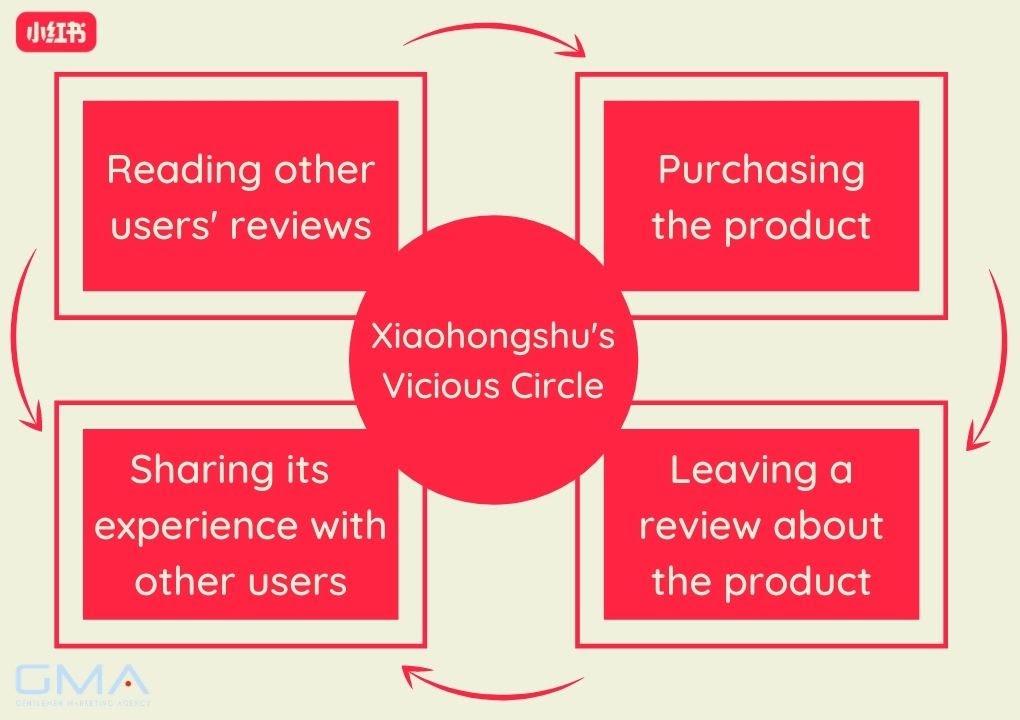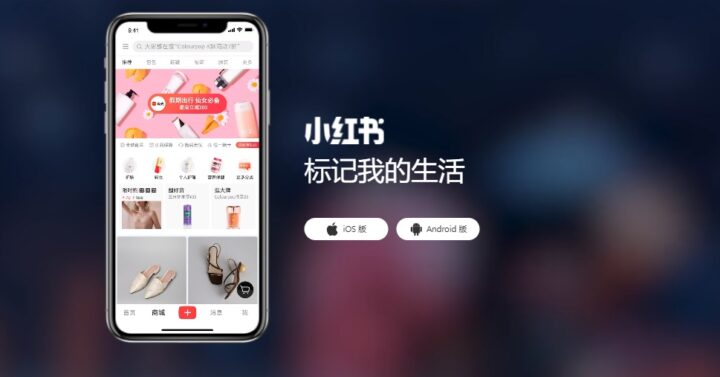Xiaohongshu, the instagram of China bans 29 Brands Over ‘Fake Marketing’ Accusations
According to local media reports Dove, Neutrogena and Nivea are among the international beauty and skincare brands that were caught up in the crackdown. Xiaohongshu, however, declined to name the brands it had “banned.”
This ban seems to have resulted in the blocking of official brand accounts. Searches for Neutrogena Nivea Dove in English or Chinese return an error message saying: “This brand has been suspected of false marketing. Related content cannot be shown.” However, brand flagship stores still appear to be available on the platform.
According to a source, the social e-commerce app Xiaohongshu has raised US$500m from existing investors. This is after it was forced to abandon plans to launch an initial public offering due to Beijing’s increased scrutiny of overseas listings.
According to a source who requested anonymity because it is confidential, the new funding for Shanghai-based Xiaohongshu (which means “little red books”) boosted the company’s valuation to US$20billion.
Little Red Book reached out to Dove to provide feedback, but was not able to get a response before publication.

Brands crack down
Beiersdorf, Nivea’s parent, responded to the statement with a written response that said: “Like a lot of other brands have encountered since yesterday. Nivea was involved with Xiaohongshu… All official Nivea accounts and sites in China use fact-based claims that are verified and compliant.”
It was informed by a Neutrogena spokesperson that they were currently in discussions with Xiaohongshu to “understand more details and [to] try] to collaborate for a quick and proper solution.”
Xiaohongshu Chinese advertising fake practice
Xiaohongshu did not provide any details about the content or the violation of Chinese advertising laws or platform rules. BoF was provided with a statement by Xiaohongshu stating that it had been discovered that the 29 brands were using “external intermediaries” in order to provide large numbers of users with cash and products to “spread fake marketing content” on its platform.
The statement said that many brands have targeted Xiaohongshu because of its reputation for being a trusted platform for reviews and recommendations. “Xiaohongshu’s recent action helps to address the industry-wide problem with false marketing by cracking down upon the brands.”
Xiaohongshu refused to answer a question about whether there was a way back onto the platform for “banned brands”.
This platform is a vital way for beauty and fashion brands to reach China’s Millennials and Gen-Z populations. Young women make up 70% of Xiaohongshu users. The platform is used by them to seek advice, discover new products and lifestyle inspiration in a variety of categories.
Many Chinese beauty fans may feel disappointed to see their favourite brands disappear online today. On December 16, Xiaohongshu, also known as Little Red Book, blacklisted 29 brands, including Nivea and Dove. This was in response to suspicions of false marketing. These posts no longer show up when you search for them on the site. However, their flagship stores are still online.
Although the platform didn’t specify the content, Xiaohongshu gave Business of Fashion a statement that stated: “Xiaohongshu was targeted by many brands due to its reputation for being a trusted platform for reviews and recommendations…
Xiaohongshu’s recent action contributes towards tackling the root problem of industry-wide false marketing. Xiaohongshu didn’t say if and how brands could be removed from their bans.
Since September 2015, China’s new advertising law was in effect, China has taken greater steps to stop false advertising. Among those provisions are a ban on superlatives such as “national level,” “the most” and “best.” Falsified scientific research and fabricating the effectiveness of a commodity are other no-nos.
Many brands were already flagged for misleading consumers.
Procter & Gamble was fined nearly 1 million in 2015 for retouching its images. Xiaomi got into trouble for claiming that its smartphones were the “best”. Canada Goose, a luxury parka manufacturer, was recently fined $71,000 for claiming its down coats were made from Hutterite.
Little Red book Young (wealthy) Chinese Female Users
RED was created to be a platform for luxury and high-end fashion products from foreign brands. It can link to other eCommerce platforms via hyperlinks and has its own logistics network. This makes it ideal for searching information about beauty products.
Although the integrated eCommerce store was added later in the development of the app’s life, users were already familiar with following key opinion leaders (KOLs) and influencers on RED before online stores became available.
A presence on RED is a positive thing for cosmetic companies.
Little Red Book is a LifeStyle Shopping App
Little Red Book has successfully assembled a large number of women who love fashion shopping, sharing and luxury/fashion shopping. The app created a safe environment for customers to shop.
Little Red Book’s own cross-border ecommerce platform, “RED Store”, was launched in 2014. The app allows users to purchase overseas products from Chinese brands directly through it.
Little Red Book has been a strategic partner with many brands, including Swiss, Lancome and Innisfree, since then.
These are the Most Popular Topics on RED:
- Make-Up/Cosmetics
- Fashion
- Travel & Food
- Health
- Maternity
RED (Little Red Book), an amazing success
Little Red Book, a user-generated content platform is a hub for females sharing and discussing beauty and fashion products. It has 100,000 new content every day and 780 million product contents. It has been a social ecommerce platform that has enjoyed great success, particularly in 2015 when its GMV jumped from around 1 million RMB to more than 100 million in six months.
It is constantly growing, with over 300 million registered users by 2020. It was worth $6 billion USD in 2020. It is one of the most popular platforms for e-commerce in China and offers a unique opportunity to foreign marketers looking to tap into the huge China market.
LITTLE ROSE BOOK IS A MUST-HAVE FOR CHINA MARKETERS.
read more
- A huge hub for young urban women
According to the official website, Little Red Book had 300 million registered users by 2020. The most active users were those born after the 1990s and the post-95s. IResearch statistics show that more than 50% of users are under 30 years of age, and that over 80% of them were female. 56% of users of os live in 1st and 2nd-tier cities. Over 50% of them are from the upper middle and lower classes.
Xiaohongshu has a strong and highly converting audience, making it an ideal platform for international beauty and fashion brands to promote and sell their products. This platform is the perfect channel for targeting young, well-off female shoppers who are willing to purchase branded products.
- Targeted and highly converting users
Little Red Book is a community of savvy users who review and research their products on the app. It’s a trusted source for advice and recommendations to its community of beauty and fashion lovers. Before you purchase products, it is a good idea to read the comments and opinions posted on Xiaohongshu.
Little Red Book is used by most Chinese people to not only discuss fashion and beauty tips, but also to find and purchase products. Little Red Book offers a higher conversion rate than other ecommerce platforms.
After reading customer reviews, 8 percent of Little Red Book users place orders on the app. This compares to 2.6% who order the same thing on Tmall (China’s largest online marketplace for brand goods owned by Alibaba). Brands have an incredible opportunity to reach ready-to-buy customers who trust the platform.

- A community that is interactive and engages
Users can create their own content and “Save” them. They can also interact with others via “Likes”/ “Comments” or press “Follow”, to subscribe to a specific user/brand.
Little Red Book employs a recommendation algorithm in order to create a personalized homepage that is based on the users’ browsing history and search history. This data is also used to create an “Explore” feature. This function allows users focus on the topics they are most interested in and remove irrelevant information.
User interface: Followed Account / Discovers Account that may interest you using your search history and/or interest center/ discovers accounts nearby with geolocalisation
“Nearby”, which shows hot topics based on the user’s geographic location, and “Follow”, which shows the most recent posts from subscribed accounts.
Trust & Proximity
XiaoHongShu’s engaging features have helped to reinforce this sense of safety, trust, and belonging in a group of like-minded friends. The app is being used by a large number of people up to seven times per day. If the strategies are well-designed and managed, brands can quickly build their reputation and brand awareness.
KOLs marketing has a large word-of mouth effect
Many celebrities share their shopping tips and lifestyle hacks every day on Instagram, along with photos of the less glamorous side of their lives. This has led to a unique UGC circle (user-generated material) made up of influential influencers with large followings.
Little Red Book can ensure the quality and safety of its merchandise through acting as a first-party distribution, handling deliveries, and providing customer service. Qualified brands can also set up their own digital shops. Little Red Book offers full logistics, customer service, marketing support, data insights, and other services to brands.
Marketing Checklist to be successful on Little Red Book
- Get to know key opinion leaders
People will pay attention to influencers. KOLs could be stars, internet celebrities, or simple users. Little Red Book’s unique strength is its close-knit, trustworthy community. This makes influencers much more powerful than others on social media. Any user can become a micro-influencer if they are willing to share their personal experiences. Many of them have large fan bases who closely follow their activities. Because they are trusted more than reviews from other brands or platforms, the content generated can have a significant impact on user’s purchasing decisions.
The trend for 2020 is Micro-Influencers. These are cheaper, but they have better engagement rates and closer connections with their followers.

- Quality posts should be created regularly (everyday at the beginning).
These articles are very popular on Xiaohongshu and are called comparison articles. They compare similar products from different brands in order to provide readers with a good overview and help them make a decision about their purchase. These articles are known as “Gan Huo” (Gan Huo). Even if readers don’t purchase directly from Xiaohongshu’s site, the content they view will have an impact on their future purchases as well as brands’ image. Little Red Book is more than a platform for brands to tell stories. It also provides useful information about products, such as prices, available ranges and variations, as well as where to buy.
Our content writers are a key contributor to the success of campaigns for brands on Little Red Book. They research extensively and create high-quality, detailed and varied content (photos, videos and articles ) that reinforce brands’ positioning while also converting readers into buyers.
- Engage with users proactively
It is crucial to monitor and control the discussion and interaction around the content. The Chinese are often online and may have questions about products. They are also open to discussing, critiquing, and commenting on brands or products. Brands must be responsive to users and communicate with them on a timely basis.
Brands’ credibility and influence on users’ decisions about whether to buy from them is ensured by their constant engagement. It is not enough to create and publish good content. Brands must be proactive and fully engaged in following up on the discussions.
More information about Little Red book?
Contact us we can REALLY help you


